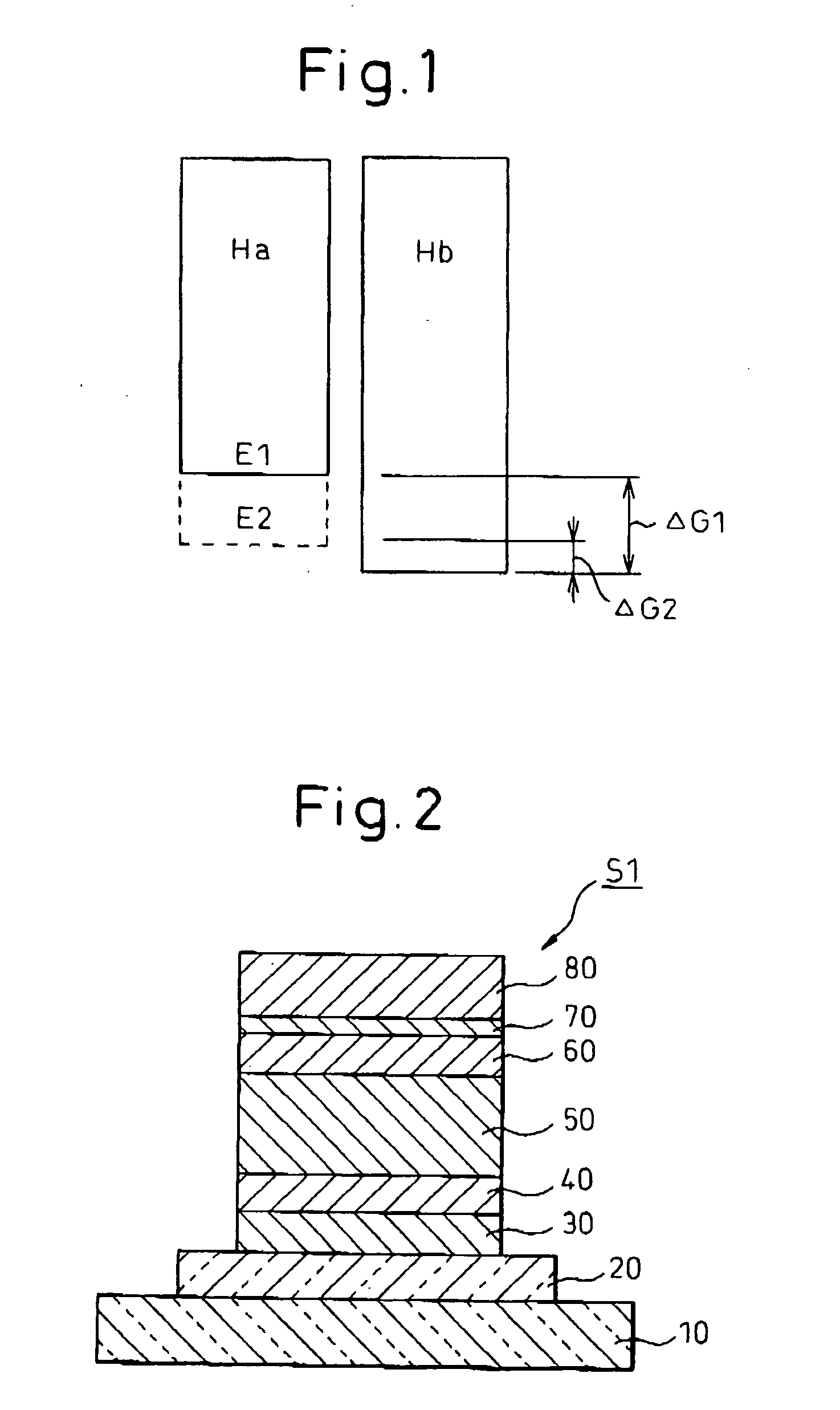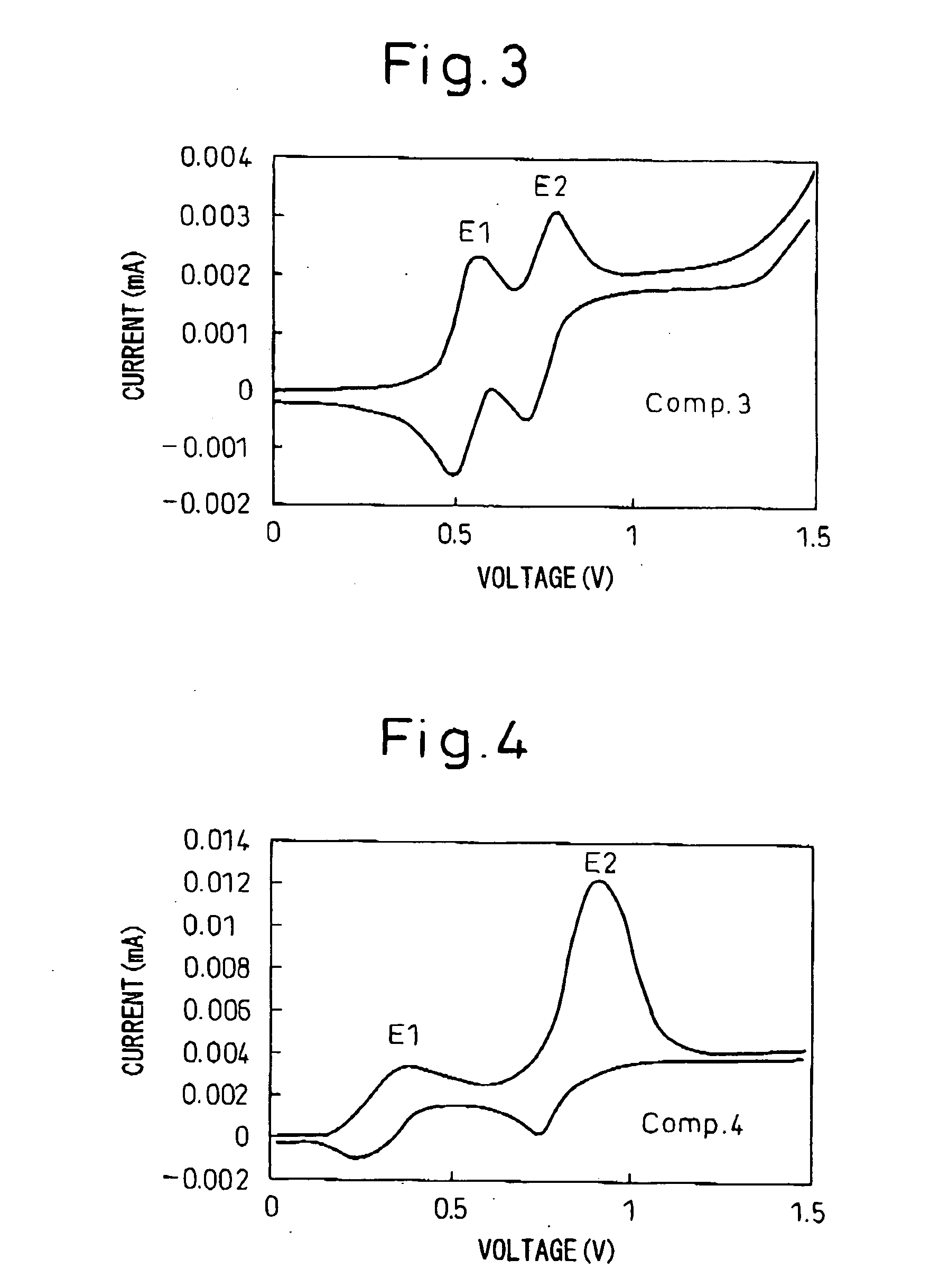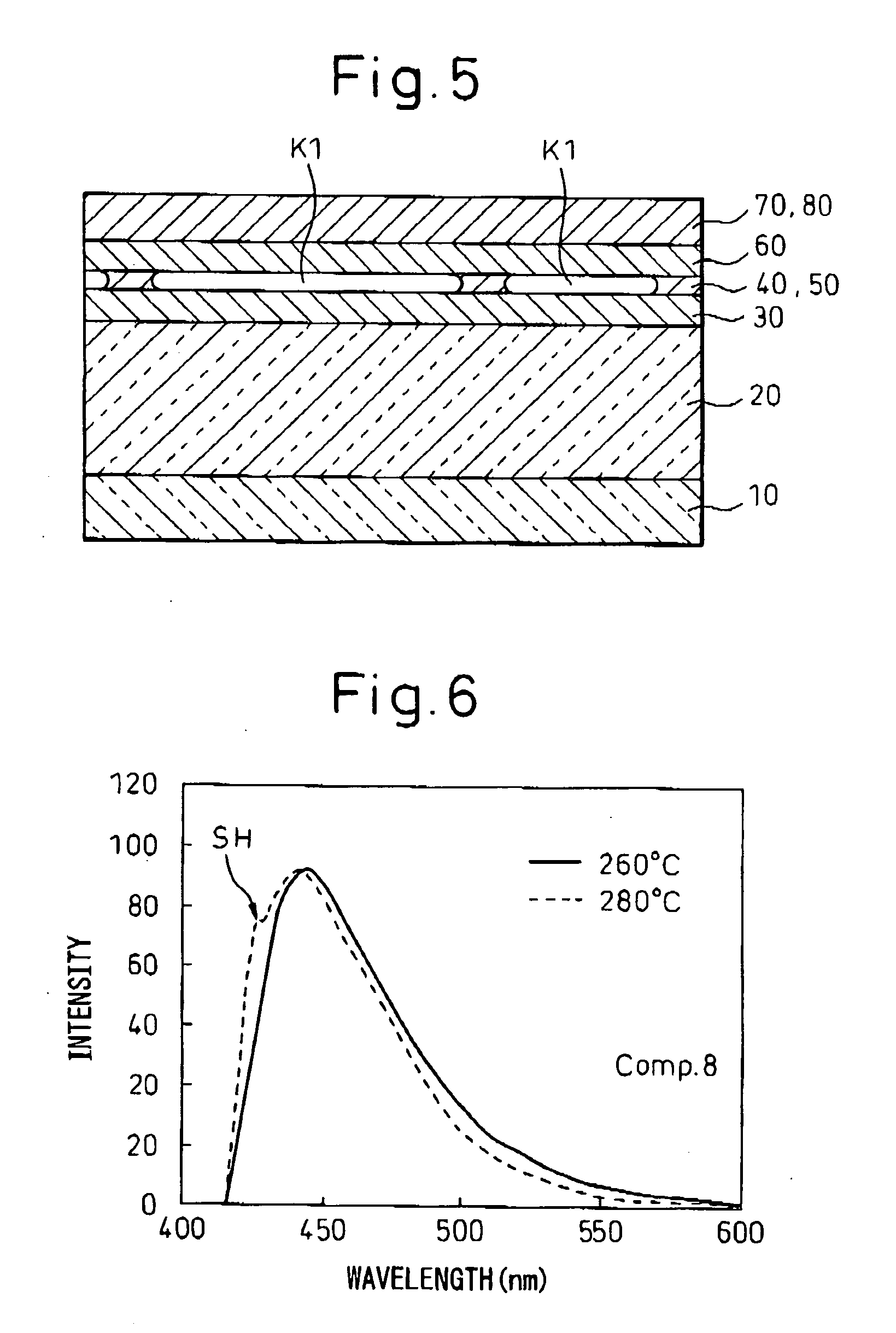Organic EL devices and production process thereof
- Summary
- Abstract
- Description
- Claims
- Application Information
AI Technical Summary
Benefits of technology
Problems solved by technology
Method used
Image
Examples
example 1-1
[0250] An ITO coating (transparent electrode) was formed as an anode 20 on the glass substrate 10, and a surface of the ITO coating was polished to obtain a surface roughness of Ra of about 1 nm and Rz of about 10 nm.
[0251] A hole-injecting layer 30 consisting of CuPc as an organic material having a crystallinity was formed at a thickness of 10 nm on the anode 20. Then, to form a hole-transporting layer 40, Compound 1 (tertiary amine compound) was formed at a thickness of 20 nm on the hole-injecting layer 30.
[0252] A light-emitting layer 50 was formed at a thickness of 20 nm on the hole-transporting layer 40. The light-emitting layer 50 was formed from Compound 1 (tertiary amine compound), Compound 8 (electron-transporting material) and Compound 9 (light-emitting additive material) in a weight ratio of 60:20:3. The heating temperature of Compound 8 as the electron-transporting material was adjusted to 260° C.
[0253] Thereafter, a 20 nm-thick electron-transporting layer 60 consisti...
example 1-2
[0255] The procedure of Example 1-1 was repeated with the proviso that, in the formation of the light-emitting layer 50, the heating temperature of Compound 8 (electron-transporting material) was increased to 280° C.
[0256] The EL device was subjected to the durability test under the conditions: circumstance temperature of 85° C., initial luminescence of 400 cd / m2 and 1 / 64 duty driving. The results described in Table 1 were obtained. Further, it was observed in the storage test under the circumstance temperature of 100° C. that no remarkable dark spot is generated over 500 hours.
example 2-1
[0257] The procedure of Example 1-1 was repeated with the proviso that Compound 2 was used as the tertiary amine compound in the formation of the hole-transporting layer 40 and the light-emitting layer 50.
[0258] The EL device was subjected to the durability test under the conditions: circumstance temperature of 85° C., initial luminescence of 400 cd / m2 and 1 / 64 duty driving. The results described in Table 1 were obtained. Further, it was observed in the storage test under the circumstance temperature of 100° C. that no remarkable dark spot is generated over 500 hours.
PUM
| Property | Measurement | Unit |
|---|---|---|
| Temperature | aaaaa | aaaaa |
| Electric potential / voltage | aaaaa | aaaaa |
| Nanoscale particle size | aaaaa | aaaaa |
Abstract
Description
Claims
Application Information
 Login to View More
Login to View More - R&D
- Intellectual Property
- Life Sciences
- Materials
- Tech Scout
- Unparalleled Data Quality
- Higher Quality Content
- 60% Fewer Hallucinations
Browse by: Latest US Patents, China's latest patents, Technical Efficacy Thesaurus, Application Domain, Technology Topic, Popular Technical Reports.
© 2025 PatSnap. All rights reserved.Legal|Privacy policy|Modern Slavery Act Transparency Statement|Sitemap|About US| Contact US: help@patsnap.com



